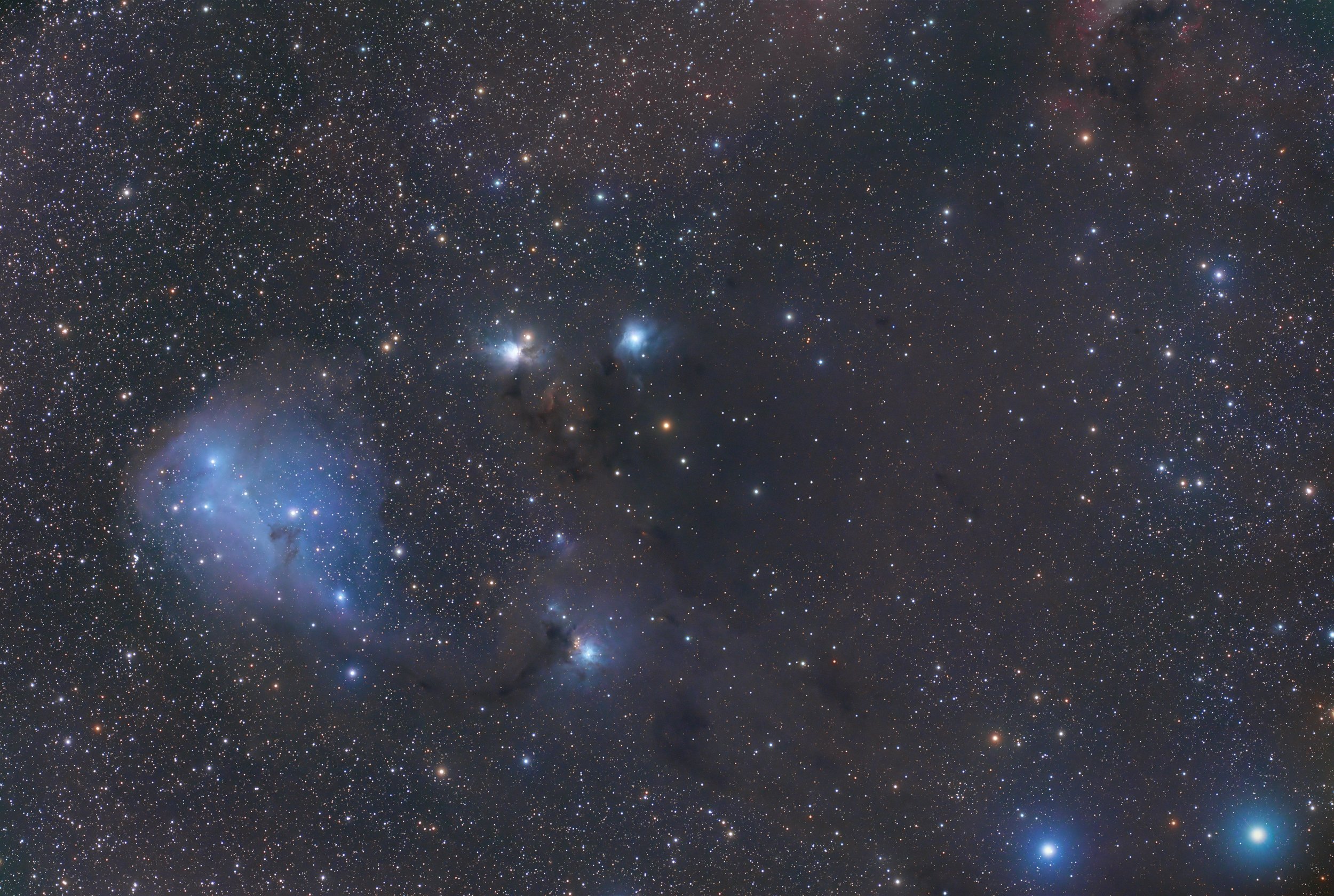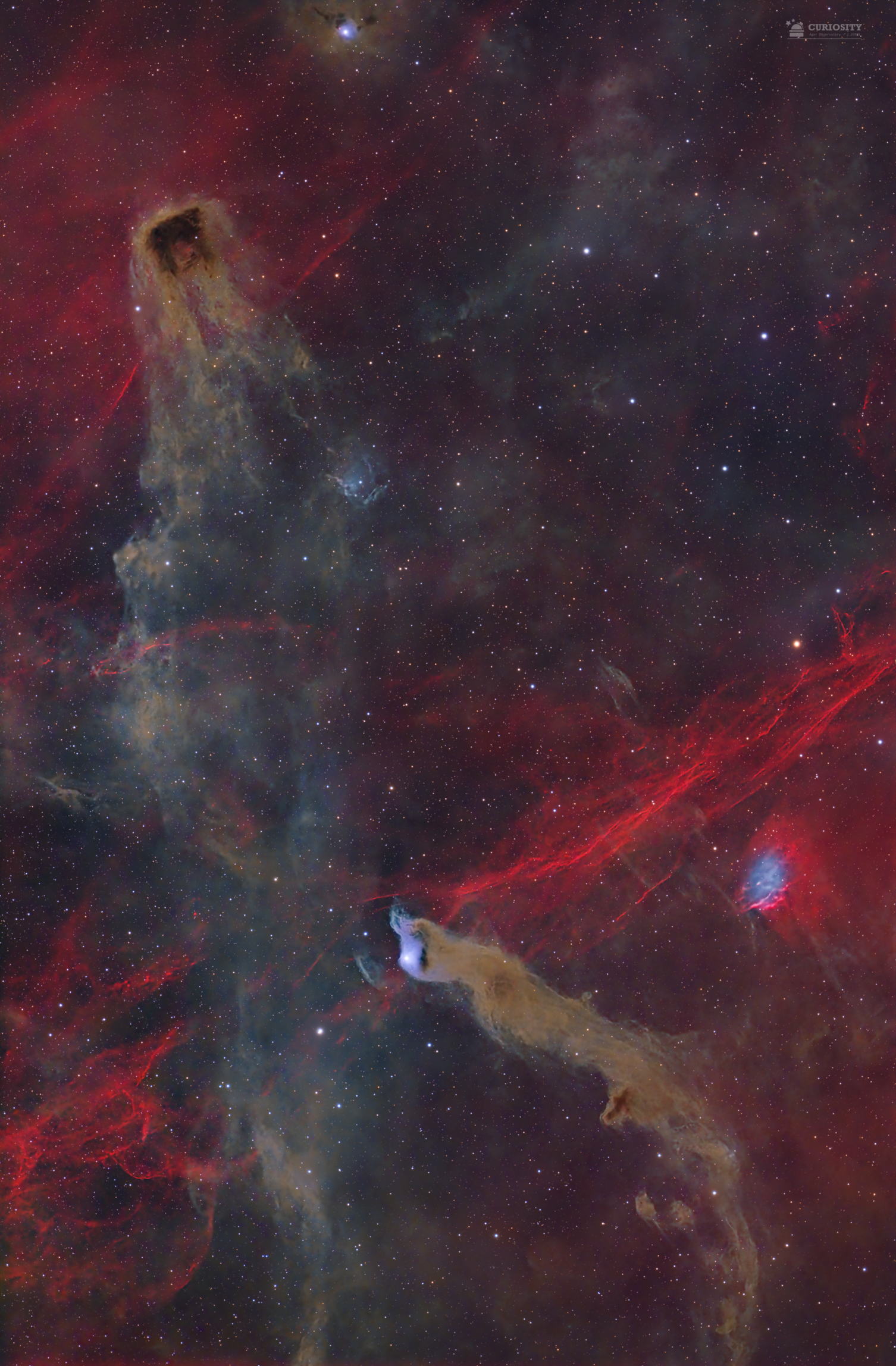
AAPOD2 Image Archives
The Wolf's Cave and the Toast Nebula
This remarkable region in the constellation Cepheus showcases a tapestry of astrophysical phenomena, where stars and interstellar matter come together to create a scene of cosmic artistry. Each of these designations represents distinct features within a vast complex of gas and dust, woven into the fabric of our galaxy.
VdB 152, also known as Ced 201, is a faint reflection nebula perched at the tip of an elongated dark nebula. It gleams with a ghostly blue hue as it reflects the light from nearby stars, offering a stark contrast to the surrounding inky darkness.
LDN 1221 is part of a dense dark nebula obscuring background starlight, forming intricate, sinuous shapes that add depth and mystery to the region.
LBN 534 and LBN 538 are large, faint emission nebulae that provide the backdrop, glowing faintly in hydrogen-alpha emissions, highlighting the presence of ionized gas.
This area is a rich hunting ground for amateur and professional astronomers alike. The interplay of light and shadow reveals the ongoing processes of star formation, with dark filaments of dust punctuated by the glow of emerging stars. The complex structures speak to the dynamic interactions between gravity, stellar winds, and radiation.
Imaged under the pristine skies of a dark-sky location, this celestial mosaic serves as a reminder of the quiet yet awe-inspiring forces that shape the universe. In Cepheus, beauty and complexity converge in an astronomical masterpiece.
COSMIC CHECKMARK (LBN534+VdB158)
LBN 534 and VdB 158, located in the constellation Cepheus, together form a captivating interstellar duo offering a wealth of scientific insights. LBN 534 is classified as a diffuse emission nebula, while VdB 158 is a reflection nebula. Emission nebulae, like LBN 534, are primarily composed of ionized gas emitting light at various wavelengths, providing valuable information about the properties of the interstellar medium. VdB 158, on the other hand, owes its striking appearance to the scattering of light by dust particles.
In the case of VdB 158, the bluish appearance is the result of the preferential scattering of shorter, bluer wavelengths of light. Its juxtaposition with LBN 534 offers a unique opportunity for astronomers to study the interaction between the illuminating stars and the surrounding dust and gas. Analyzing these nebulae contributes to our understanding of the intricate processes governing star formation and the dynamics of the interstellar medium in the vast expanse of our galaxy.


